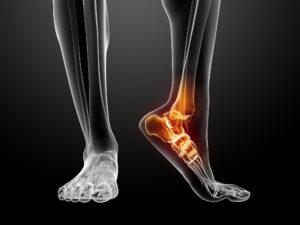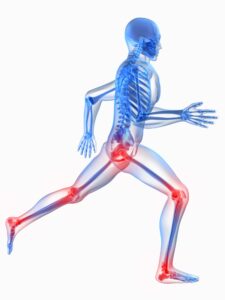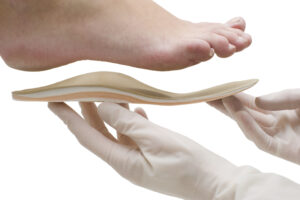 This area of Podiatry focuses on the structural anatomy and investigates the range of motion and alignment of the bones, joints and soft tissues.
This area of Podiatry focuses on the structural anatomy and investigates the range of motion and alignment of the bones, joints and soft tissues.
It is important that the lower limb structures are able to move in an integrated manner to avoid abnormal movement or pressure on muscles, ligaments, tendons and bone function which could harm the joints.
Poor alignment can cause excess stress on the bones and soft tissues which can cause pain and poor posture which can contribute to problems with your foot, ankle, knee, and hip or lower back.
Common biomechanical problems can come from having high arches or flat feet or fallen arches or where you ‘roll in’ excessively when you walk. Other common problem areas are when pain is experienced around the ball of your foot or under your big toe or under your foot around the heel region.
These are all symptoms that can usually be improved by a biomechanical assessment by a Podiatrist. You can see a short video made by the Society of Chiropodists and Podiatrists explaining ‘what is musculoskeletal Podiatry?’ here:
 Biomechanical assessment
Biomechanical assessment
The first step is to undergo a full biomechanical assessment. The Podiatrist will assess your overall anatomical alignment and posture whilst considering the position of your spine, pelvis, knees, ankles and feet.
Assessments will be done with you whilst you are standing and then walking to see your natural standing and walking pattern and to assess your ‘gait cycle’.
In addition I will be investigating and measuring the range and quality of motion of your pelvis, knee, ankle and foot as well as the relationship and angles between these joints.
Sometimes, to improve the alignment of the foot and ankle or lower limb, orthotics may be prescribed by the Podiatrist.
 Orthotics
Orthotics
Orthotics are also known as insoles or orthoses and are inserts that are placed in your footwear. They are specifically designed to improve the alignment of the lower limbs which can improve the biomechanical function of your feet whilst improving your posture.
Orthotics can provide support and help to improve and restore the correct alignment of your feet and lower limbs. They can help to reduce abnormal stresses placed upon tendons, ligaments, muscles and the joints and bones which can reduce irritation, pain and inflammation.
Orthotics can often help treat the following conditions:
- Achilles tendinopathy
- Excessive ‘rolling-in’
- Leg length differences
- Heel pain
- Plantar fasciitis
- Forefoot pain (neuroma)
- Osteoarthritis
- Pain from corns and callus

